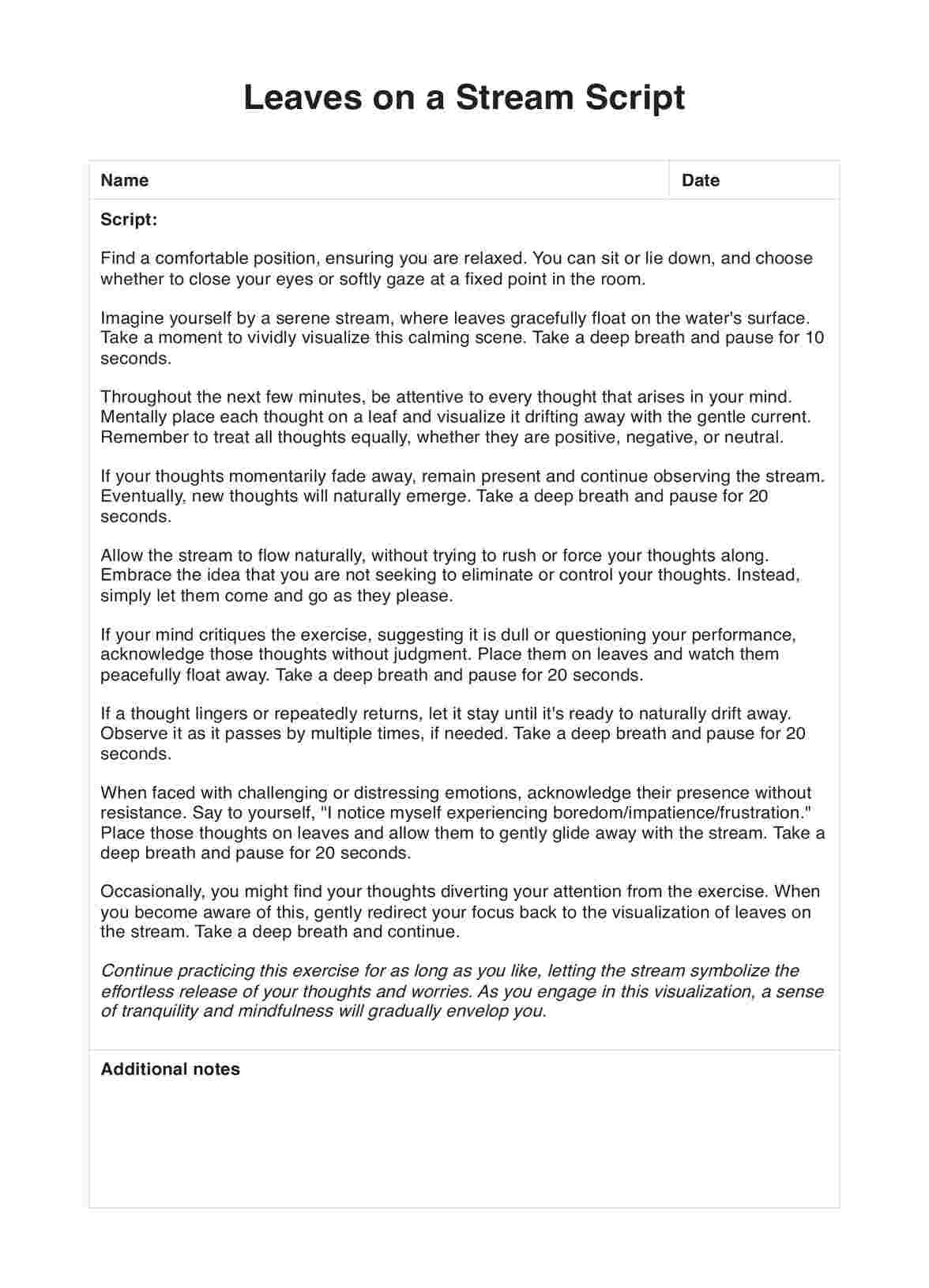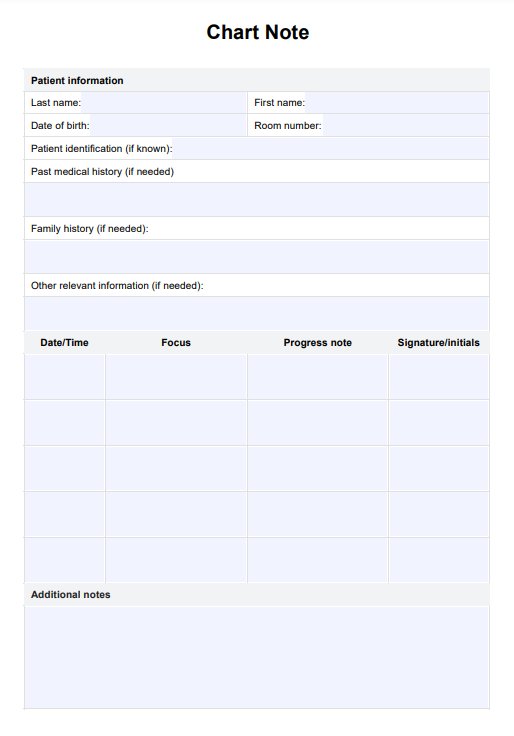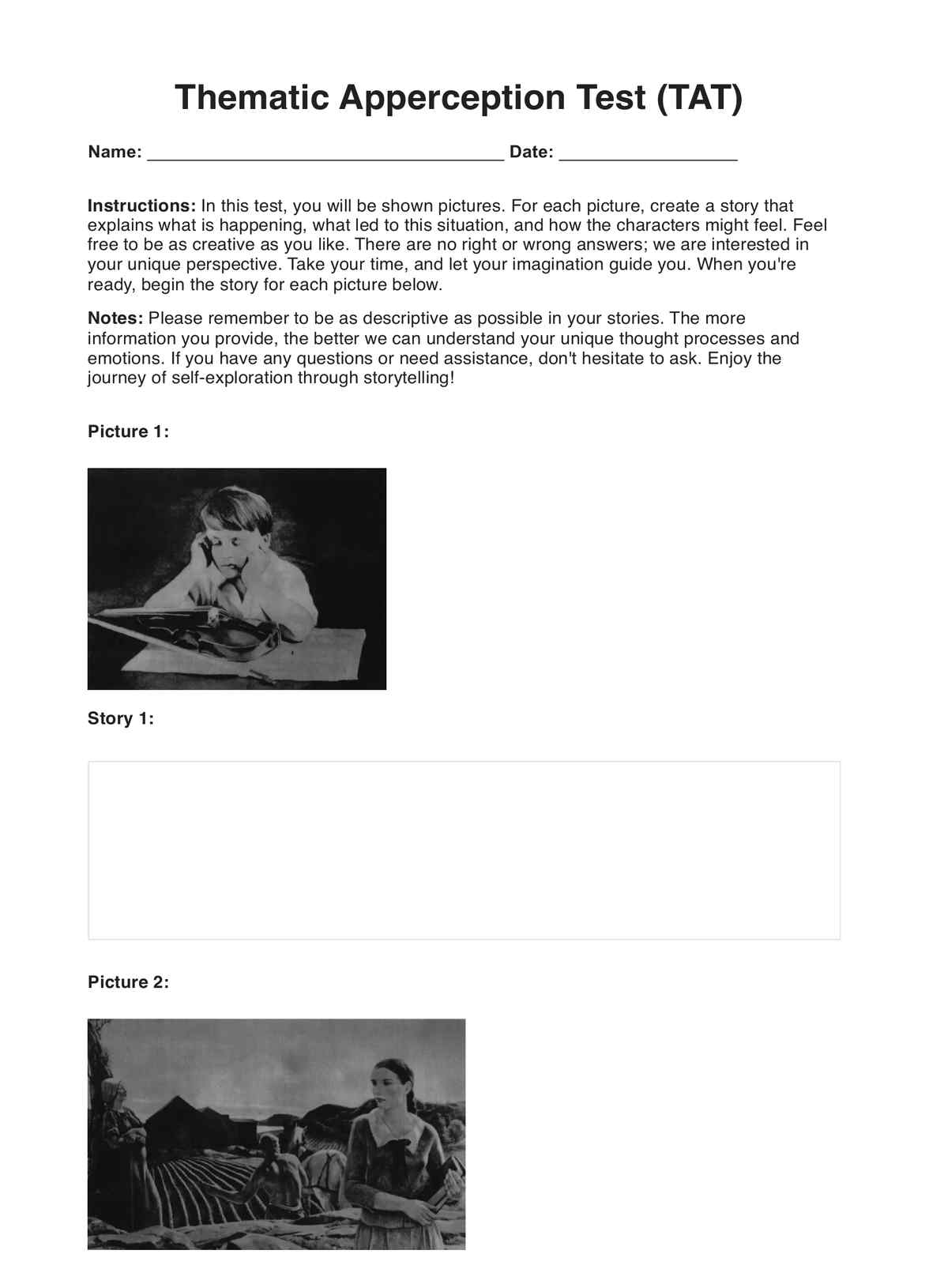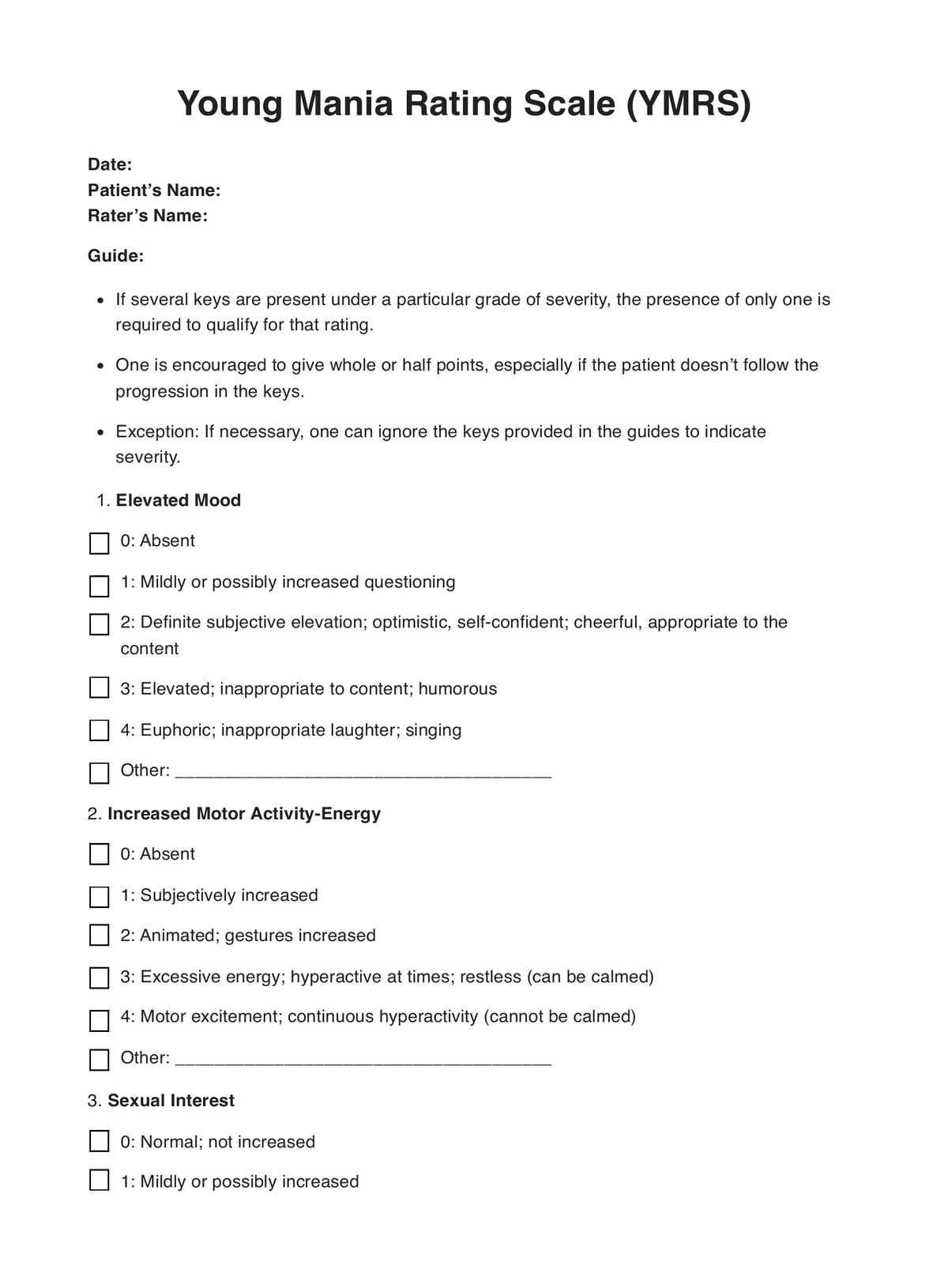EFT Tapping Worksheet
Unlock emotional well-being with our free EFT Tapping Worksheet guide. Transform stress into calm serenity through this powerful self-help technique.


Introduction to EFT tapping
Emotional Freedom Technique (EFT) Tapping is a powerful self-help tool that combines psychological principles with acupressure. Also known as Emotional Freedom Techniques, this method involves tapping specific meridian points on the body while addressing negative emotions and limiting beliefs. Developed by EFT practitioner Gary Craig, Tapping aims to balance the body's energy system and alleviate emotional distress.
The tapping sequence typically involves gentle tapping with the fingertips on critical points such as the eyebrow point, side of the eye, under the eye, nose, chin, collarbone, arm, and the top of one side of the head. This tapping process, deep breath, and a setup statement acknowledging the issue while accepting oneself create a decisive shift in the body's energy flow.
Practitioners believe tapping these meridian points realigns the body's energy system, promoting emotional well-being and reducing stress. EFT Tapping has been used to address a variety of concerns, including anxiety, chronic pain, and limiting beliefs. By tapping these specific meridian points together, individuals can relieve negative emotions, make stress hormones interrupt the body's stress response, and lower cortisol levels – the stress hormone.
Utilizing EFT Tapping daily can become a transformative self-help habit. A typical setup phrase may involve identifying a specific fear or worry, tapping through the sequence while deeply acknowledging and accepting oneself.
This simple yet effective technique can be practiced anytime, anywhere, making it a convenient tool for reducing anxiety and promoting overall well-being. To get started, individuals can download EFT Tapping worksheets and guides, which provide a structured approach to addressing various emotional challenges.
EFT Tapping Worksheet Template
EFT Tapping Worksheet Example
Tapping points
In Emotional Freedom Technique (EFT) Tapping, practitioners tap on specific points on the body to stimulate the body's energy meridians and address emotional distress. Here is a brief description of the commonly used tapping points:
- Karate chop point (side of the hand): This is the fleshy part on the outer edge of the hand, below the pinky finger. It is often used for the setup statement, where individuals state their issue while tapping this point.
- Eyebrow point: Located at the beginning of the eyebrow, right above the nose. Tapping on this point helps address feelings of confusion or frustration.
- Side of the eye: The point located on the bone at the outer corner of the eye. Tapping here is believed to help with releasing emotional tension.
- Under the eye: Found on the bone just below the eye. Tapping on this point may assist in letting go of negative emotions.
- Under the nose: The point between the nose and the upper lip. Tapping here is associated with releasing tension related to fear and anxiety.
- Chin point: Located in the cleft between the chin and the lower lip. Tapping on this point is believed to address feelings of shame or guilt.
- Collarbone point: Found just below the collarbone, where the ribcage meets the collarbone. Tapping on both sides simultaneously is standard and helps release emotional blockages.
- Under the arm: On the side of the body, about four inches below the armpit. Tapping here is thought to release stress and promote emotional balance.
- Top of the head: The crown of the head. Tapping on this point may help calm the mind and promote peace.
These tapping points correspond to the body's energy meridians, and the tapping sequence is designed to balance and realign the body's energy meridian points and flow. Practitioners often repeat the tapping point sequence while focusing on specific issues, using EFT Tapping to address emotional challenges and promote well-being.
Tapping sequence
The EFT Tapping sequence involves tapping on specific points on the body to address emotional distress, reduce anxiety, and promote well-being. Here is a link to a step-by-step guide to the primary tapping sequence:
- Top of the head (crown): Begin by tapping gently on the crown of your head with your fingertips. This point is associated with calming the mind.
- Eyebrow point: Move to the beginning of either eyebrow, right above the nose, and tap gently. This point is linked to releasing feelings of confusion or frustration.
- Side of the eye: Tap on the bone at the outer corner of either eye. This point is believed to help release emotional tension.
- Under the eye: Tap on the bone just below either eye. This point may assist in letting go of negative emotions.
- Under the nose: Move to the point between the nose and the upper lip. Tap here to release tension related to fear and anxiety.
- Chin point: Tap on the cleft between the chin and the lower lip. This point is associated with addressing feelings of shame or guilt.
- Collarbone point: Tap just below the collarbone on either side of the body. You can use your fingertips or a flat hand to tap on both sides simultaneously. This point helps release emotional blockages.
- Under the arm: Move to the side of the body, about four inches below the armpit, and tap gently on either side. This point is believed to release stress and promote emotional balance.
- Top of the head (crown): Return to tapping on the crown of your head to complete the sequence.
Practitioners may also incorporate alternative tapping options during different points in the sequence:
- Karate chop point (side of the hand): Use this point at the beginning for the setup statement or throughout the sequence for additional rounds.
- 9 gamut points: A point on the back of the hand between the knuckles of the little finger and ring finger. It involves tapping while performing nine specific eye movements and humming a short tune. This point is thought to engage different parts of the brain and enhance the effectiveness of the tapping.
Set up statement
The "Set Up" statement is a crucial component of the Emotional Freedom Technique (EFT) Tapping process. It involves creating a short phrase acknowledging the issue or problem you want to address while maintaining self-acceptance. Here is a step-by-step guide to creating an effective setup statement:
- Identify the issue: Identify the specific problem or emotional issue you want to address. It could be fear, worry, negative emotion, limiting belief, or any moving challenge.
- Rate the intensity: Rate the issue from 0 to 10 on a scale. This provides a baseline measurement to track your progress through the tapping process.
- Create a setup statement: Craft a statement that consists of two essential components:
- Acknowledgment of the problem: Clearly state the issue you want to address. Be specific and concise about what is bothering you.
- Affirmation of self-acceptance: Include a self-acceptance or self-love affirmation. This is a crucial aspect of EFT, reinforcing that you accept yourself despite the problem.
- Example setup statements
- Even though I feel anxious about [specific situation], I deeply and completely accept myself.
- Even though I fear [specific thing], I choose to love and accept myself completely.
- Even though I feel overwhelmed by [specific emotion], I deeply and completely love and accept myself.
- Personalize the statement: Make the setup statement resonate with your feelings and experiences. Use language that feels authentic to you.
- Repeat the statement: As you say the setup statement, tap on the Karate Chop Point (the fleshy part on the outer edge of your hand). This is usually done three times to set the stage for the tapping sequence.
- Reassess the intensity: After completing the setup statement and a round of tapping, reassess the intensity of your issue. Adjust the setup statement to reflect any changes in your feelings if needed.
Remember, the setup statement bridges between acknowledging the problem and accepting yourself. Combining these elements creates a powerful affirmation that supports releasing emotional distress during the EFT Tapping sequence.
Research and evidence
The history of EFT Tapping Worksheets can be traced back to the development of the Emotional Freedom Technique (EFT) itself (Anthony, 2023). Created by Gary Craig in the 1990s, EFT combines ancient Chinese acupressure and modern psychology elements to address emotional issues and promote well-being. The method gained popularity for its simplicity and efficacy in relieving various emotional challenges (Bedosky, 2022).
Research on EFT has gradually accumulated over the years, contributing to its widespread adoption. Numerous studies have explored the effects of EFT on various conditions, including anxiety, phobias, reduced stress, PTSD, and chronic pain. While more research is needed, existing studies suggest that EFT may positively impact the body's stress response and emotional regulation (Benjamin, 2023).
The development of EFT Tapping Worksheets aligns with the growing recognition of the importance of structured guidance in applying the technique (Wisner, 2023). These worksheets are practical tools, incorporating the tapping process, sequence, setup statements, and other essential elements into an organized format. Users can systematically address their specific challenges with the support of these worksheets, promoting consistency and effectiveness in their EFT practice.
The evidence supporting the use of EFT Tapping Worksheets lies in the testimonials of individuals who have experienced positive outcomes and the broader body of research demonstrating the potential benefits of EFT (Bach et al., 2019).
By providing a structured framework for users, these worksheets contribute to the accessibility and usability of EFT, empowering individuals to harness its therapeutic potential for emotional healing and personal growth (Laurence, 2023).
As EFT continues to gain recognition within psychology and holistic wellness, resources like EFT Tapping Worksheets enhance its practical application. It broadens its appeal as a self-help tool.
References
Anthony, K. (2023, April 6). EFT tapping. Healthline. https://www.healthline.com/health/eft-tapping
Bach, D., Groesbeck, G., Stapleton, P., Sims, R., Blickheuser, K., & Church, D. (2019). Clinical EFT (Emotional Freedom Techniques) improves multiple physiological markers of health. Journal of Evidence-Based Integrative Medicine, 24, 2515690X1882369. https://doi.org/10.1177/2515690x18823691
Bedosky, L. (2022, November 9). EFT tapping: What is the emotional freedom Technique? EverydayHealth.com. https://www.everydayhealth.com/wellness/eft-tapping/guide/
Benjamin, J. (2023, August 9). I Tried EFT Tapping—Here's How It Works and How It Helped Me Destress in Minutes. Real Simple. https://www.realsimple.com/health/mind-mood/stress/how-does-eft-tapping-work
Laurence, E. (2023, April 28). EFT tapping: What you need to know. Forbes Health. https://www.forbes.com/health/mind/eft-tapping/
Wisner, W. (2023, June 30). Tapping for anxiety: how it works and tips for doing it, according to an expert. Verywell Mind. https://www.verywellmind.com/tapping-for-anxiety-how-it-works-and-how-to-do-it-7550116
Commonly asked questions
The 9 tapping points in EFT include the top of the head, eyebrow, side of the eye, under the eye, nose, chin, collarbone, arm, and back to twin tapping point back on the top of the head.
Tapping frequency varies, but starting with 5-10 minutes a few times daily can be effective. Adjust based on daily habits, personal preference, and the issue's intensity.
Tap each point with your fingertips while expressing thoughts or feelings about a specific issue. Start with the Karate Chop Point, then move your fingers through the sequence. Repeat as needed.


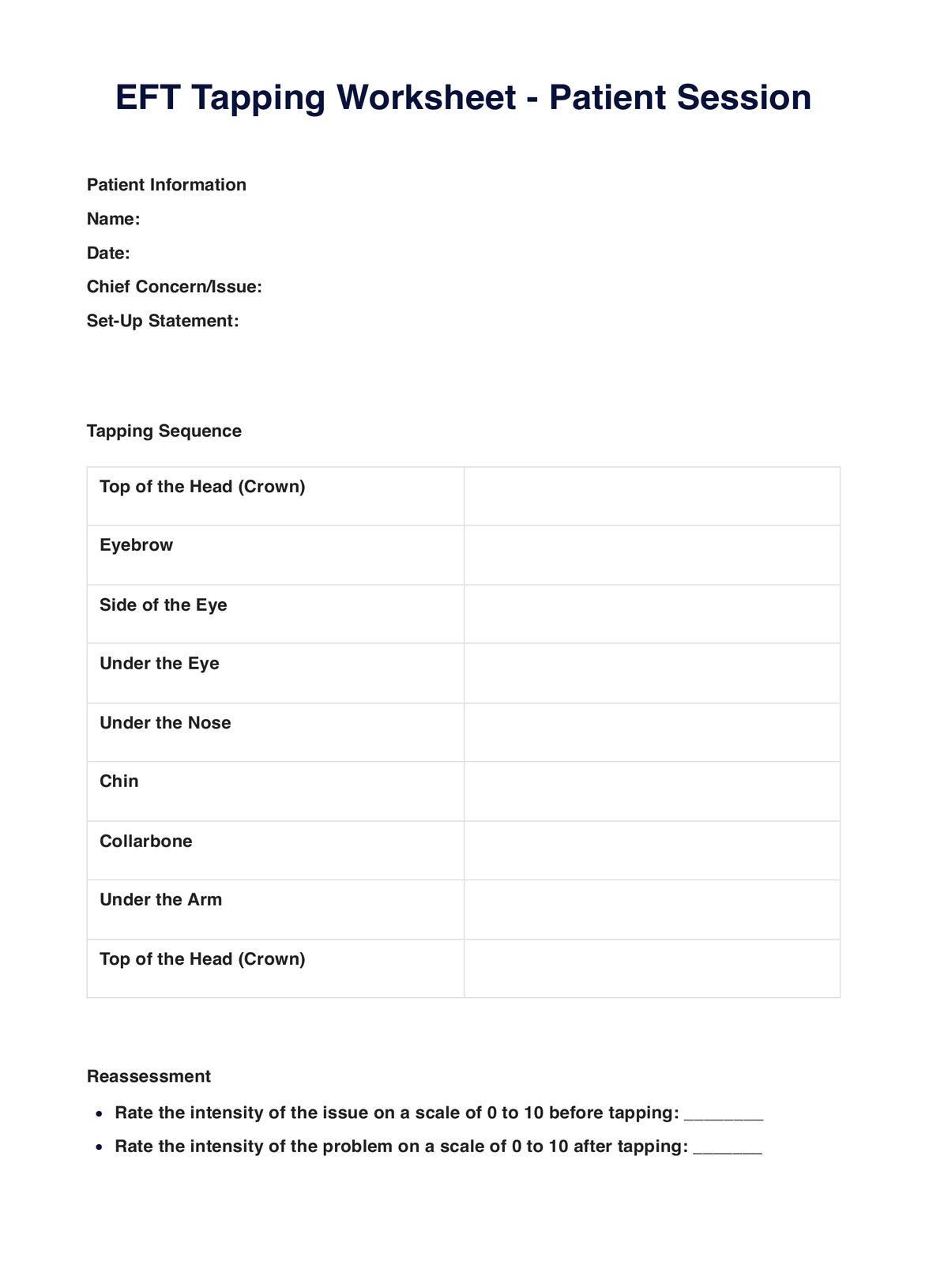
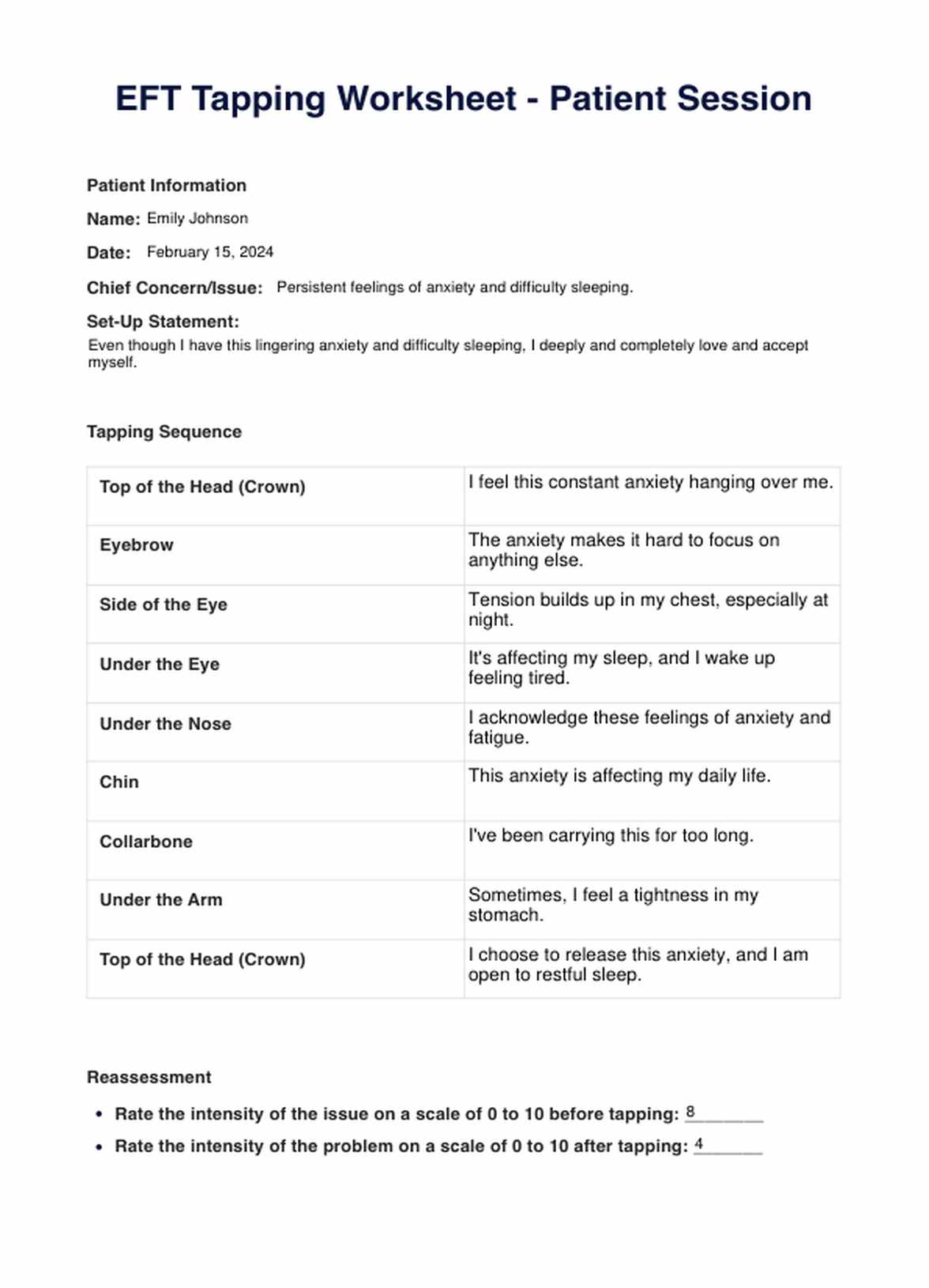

















-template.jpg)

























































































